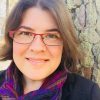Southeast Data Librarian Symposium and DLF/DigiPres Conferences
I had the opportunity to serve on two conference committees this year, which made for a busy fall! The Southeast Data Librarian Symposium (SEDLS) took place Wednesday, October 13-Friday, October 15; the Digital Library Federation and NDSA Digital Preservation combined sessions took place November 1-4.
SEDLS is a small gathering that brings together research data librarians and other data services professionals from the region. The core topics addressed at the symposium include data management, digital literacies, research data curation topics (FAIR and open data practices), and repositories. Presentations at this year’s symposium were wide-ranging, from “Introducing Scientific Data Pipelines to Novice Students” to “Collaborating to Foster Data Visualization Skills in Undergraduate Engineering Students.” This year featured both a poster session and several tool-focused workshops, including a session on ArcGIS StoryMaps and Creating Visualizations with Python/Crossref API.
DLF is typically a well-attended conference “IRL” and given this year’s fee-free registration, attendance exceeded expectations. The conference took place with a mix of live and pre-recorded sessions on the Midspace platform, with the main conference scheduled for November 1-3 and Learn DLF workshops on November 8. Dr. Stacey Patton opened the conference with a recorded conversation with Dr. Nikole Hannah-Jones, winner of the Pulitzer Prize for journalism and creator of the 1619 Project. Hannah-Jones also co-founded the Ida B. Wells Society for Investigative Reporting. The conversation was a fantastic way to delve into some of the critical themes of the conference, from empowering community archivists to document social justice movements, to ensuring that HBCUs can maintain and sustain the support they need for their digital archives. Other sessions focused on public health documentation; preservation of the records and experiences of incarcerated people during the COVID-19 pandemic; and fostering community collaborations to scale-up digitization projects. (Recordings will be made available soon!)
NDSA’s Digital Preservation featured Dr. Tanya Sutherland’s keynote talk, After the Archives: On Living and Dying in Digital Culture. She posed questions about how new media technologies remove individual agency in determining how bodies/words/images are used after death, using as an example the Whitney Houston hologram show developed by promoters as a commercial event well after her death. What choice will individuals have to be forgotten if digital traces remain to be exploited? The conference’s theme, Embracing Digitality, drew together presentations on the impacts that digital culture has on our lives and the ongoing challenges of being mindful stewards of digital cultural heritage while navigating global warming and environmental crises.
I always appreciate the opportunities for informal conversations, social activities (digital preservation trivia!), and pauses in the schedule to reflect or just take a few minutes of quiet time between talks. DLF and DigiPres aim to be respectful of the screen pressures and digital drain that conferences can impose; the organizers try to include lots of fun and low-stress ways for attendees to connect, find mentors, and learn from the community.

2 Comments on ‘SEDLS, DLF, and DigiPres 2021’
Thanks for this report, Heather! It sounds like SEDLS and DLF were really engaging this year. I look forward to watching the recordings.
I’m glad you were able to participate in all three conferences, Heather! I can’t wait to hear the recorded conversation between Drs. Patton and Hannah-Jones. And kudos to DLF/DigiPres for thinking through participation options that minimized the negative impacts of so much screen time.